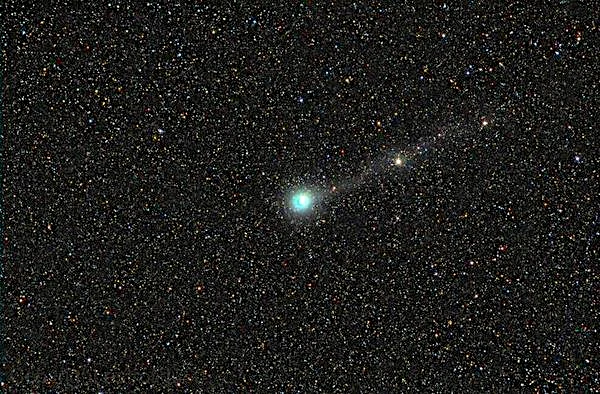
A comet is a small celestial body composed of ice, dust, and gas. As it approaches the Sun, the heat causes the ice to sublimate, creating a temporary atmosphere called a coma, and often a tail of gas and dust that extends millions of kilometers. Comets are often referred to as "dirty snowballs" due to their composition.
Comet Lemmon (C/2012 F6) was discovered on March 23, 2012, by the Mount Lemmon Survey in Arizona. It became visible to the naked eye in the southern hemisphere in early 2013, reaching its peak brightness in January. On January 9, 2013, it was observed with an apparent magnitude of about 5.5, making it visible under dark sky conditions.
Comet Lemmon is notable for its green color, due to the presence of diatomic carbon gas (C2) in its coma. This emerald hue captivated both amateur and professional astronomers. Its trajectory brought it close to the Sun, increasing its activity and visibility.
On January 9, 2013, Comet Lemmon was located in the constellation Sagittarius, providing a magnificent view for observers in the southern hemisphere. Amateur astronomers were able to photograph it and observe it with binoculars or small telescopes. Its dust tail and green coma made it a remarkable celestial object.
1997 © Astronoo.com − Astronomy, Astrophysics, Evolution and Ecology.
"The data available on this site may be used provided that the source is duly acknowledged."
How Google uses data
Legal mentions
English Sitemap − Full Sitemap
Contact the author